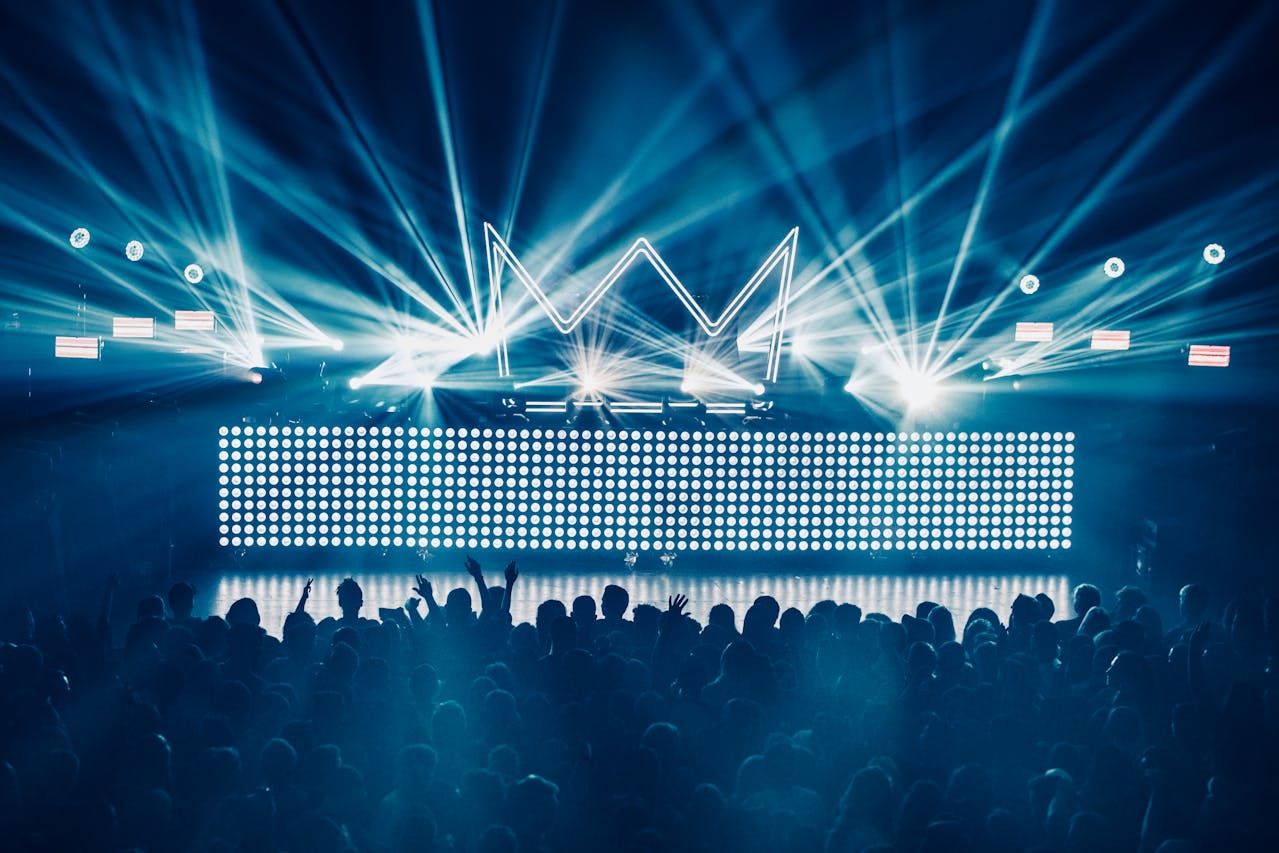
Stage design is a crucial aspect of event production. It is the space where the event’s story comes to life and establishes the overall atmosphere. When executed well, it can engage and captivate the audience.
These principles can be applied to various events, such as concerts, theatrical performances, or corporate events. Stage design is crucial to creating an immersive and memorable experience for attendees.
Creative Elements of Stage Design
Understanding the fundamental elements of stage design is crucial. These elements allow you to plan your event carefully to create the most impact on the audience.
Setting the Mood
Every event has a unique atmosphere, which you can cultivate using the right stage elements. Use different design elements to create elegance, excitement, or serenity. The stage design should align with the desired mood.
Narrative Embodiment
A well-designed stage has the power to narrate a story without words. Use subtle nuances like lighting and color themes to support the narrative you’re trying to provide. Use bold and elaborate backdrops to emphasize certain points. Every element should contribute to the overarching narrative you’re trying to portray.
Composition and Focus
Like a skilled artist, a stage designer must carefully compose the elements to guide the audience’s focus. Strategic placement is crucial if you want attendees to focus on certain parts of the stage at different moments in your event. You can use props, lighting, and spatial arrangement to draw attention to key focal points in your stage setup. You can use different lighting for keynote speakers to set different tones during a corporate event.
Space Revelation
Stage design should define the space that the audience will see, providing depth and perspective as design elements transform the available space. Props, lighting, and other elements can enhance the various dimensions created in your setup. Designers can create an illusion of expansiveness or intimacy through clever perspective and depth.
The Significance of Proper Stage Design
Effective stage design goes beyond mere aesthetics. Make sure to aim to enhance the attendee experience. Consider the following:
-
Enhanced Engagement:
A thoughtfully designed stage captures the audience’s imagination, fostering a deeper connection with the event’s content.
-
Brand Representation:
The stage design visually represents the brand’s identity and values for corporate events. Proper placement of different branding elements can leave a lasting impression on attendees.
-
Atmospheric Ambiance:
The ambiance created by the stage design sets the tone for the entire event. You can use them to influence your guests’ emotions and perceptions.
Components of a Stellar Stage Design
A successful stage design comprises several key components. Each contributes to the overall impact and strength of the message you’re trying to convey.
-
Backdrop:
The backdrop serves as the focal point of the stage, providing a visual anchor for the audience. You can use a dynamic LED screen or a hand-painted mural. The backdrop sets the scene for the event.
-
Props and Set Pieces:
Props, such as furniture, lights, background elements, and decorative items, play a vital role in enhancing the thematic coherence of the stage design. They can also set the event’s tone, time, and theme.
-
Lighting:
Arguably one of the most powerful tools in a stage designer’s arsenal. It can transform the ambiance at any given moment, highlight key elements, and evoke the right emotions from your guests.
-
Sound Integration:
Aim for seamless integration of sound elements. Begin with music or ambient noise to set the mood. As the agenda in your event moves forward, you can enhance the experience using different sounds, creating an immersive quality for your guests.
Proper planning allows you to set the stage using the components with the design above. Work with seasoned stage design specialists to get the best equipment set up for your event.
Essential Stage Design Tips for Innovative Events
Here are some stage design tips to help you innovate the design elements for your gathering.
Use Lightweight Materials
Opt for lightweight materials. They are easy to transport and manipulate, allowing for greater flexibility in design execution.
Minimize Clutter
Keep the stage clutter-free to ensure optimal visibility, allowing the audience to focus on key elements.
Consider All Audience Views
Design the stage and consider audience members seated in various sections of the site. Ensure that everyone has an optimal viewing experience, regardless of seating arrangement.
Strategic Lighting Placement
Experiment with different lighting placements during the planning phase. Look for ways to accentuate focal points, create depth, and evoke mood.
Opt for The Best Audio-Visual Elements in the DFW Area
Stage design is a dynamic art form that shapes your guests’ experience at your event. With careful planning and state-of-the-art audio-visual equipment, you can use its fundamental elements to leave a lasting impression. Showtech Productions is a seasoned full-service audio-visual production and rental company serving the DFW area, providing you with the latest equipment to set the stage for your event. Request a proposal today with Showtech Productions.

Leave a Reply